Wave Energy
advertisement
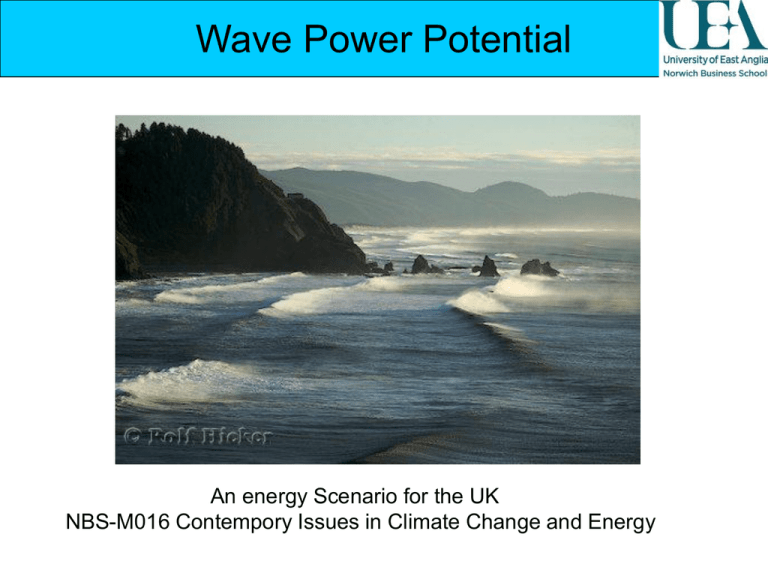
Wave Power Potential An energy Scenario for the UK NBS-M016 Contempory Issues in Climate Change and Energy Wave Power: overview • Sun makes wind and wind makes waves > Waves are third hand solar energy • Waves generated by wind passing over the surface of the sea – direct correlation between the power of the wind and the power of the wave • Wave height determined by – wind speed, duration the wind has been blowing, depth and topography of the seafloor • Energy output (wave power) determined by – wave height, wave speed, wavelength, and water density • The energy provided most often used in – electricity generation, water desalination, and water pumps Wave Power: history A bit of history… – First concepts 200 years ago, but viable schemes only in the 1970’ – Increased interest for RE, and specifically for wage energy, after the energy crisis in 1973, but insufficient money allocated to bring projects to maturity – 80’ because of oil price fall, wave energy funding reduced significantly – 90’ growing awareness of the potential of generating energy from waves Relatively new renewable technology in comparison to other RE • 15-20 years behind technology wind Long process to develop this type of energy but economics of current technologies are potentially attractive Wave energy technology (1) • Wave devices characterized by: – Locations: •Shoreline: tethered in intermediate depths •Nearshore: fixed to the seabed in shallow water •Offshore: more difficult to construct and maintain than shoreline but greatest potential as waves in deep water have greater energy content – Method used to capture the energy (fixed, tethered, floating devices): 1- Buoy moored to the seabed 2- Oscillating Water Column (OWC): can be fixed to the seabed or installed on the shoreline; simple and robust 3- Floating device for offshore: use motion of waves; leading technology currently Wave energy technology (2) Pelamis WEC: leading wave power technology • 4 semi submerged cylindrical sections facing nose on towards the incoming waves and which flex and bend as waves pass > this motion is used to generate electricity • world’s first commercial wave farm to generate electricity in Portugal opened in 2008: 3 Pelamis machines with capacity of 2.25 MW (750 kW per snake); cost of 8.5 m € to deploy; project suspended in 2009 • in Scotland: plan to install the world’s largest wage farm : 3MW capacity; 4 Pelamis machines; costs 4 £m Source: Pelamis Wave Power 2009 http://www.pelamiswave.com/content.p hp?id=161 Many devices and new technologies in emergence But they are not technically at the industrial production stage > just pilot projects and prototypes Wave energy is currently in the early stage of commercialisation and it is not yet a widely employed commercial technology Worldwide potential of wave energy • Wave energy offers a large potential resources to be exploited • Total worldwide wave power estimated at 2TW (or 17 500TWh/year) - about double current world electricity production - and between 1-10 TW in deep water • Only 500 GW captured with current technology Annual average wave power density (in kW per m): any area with yearly averages of over 15kW per m has the potential to generate wave energy at competitive prices Best wave energy sites around the world are – USA, – North & South America, – Western Europe, – Japan, – South Africa, – Australia – and New Zealand http://www.tridentenergy.co.uk/images/world_map.gif UK potential of wave energy UK has a good wave climate – Well situated: surrounded by water + good position for wind on West Atlantic Coast (smaller waves on East Coast) (Lewis 42kW/m - Cromer 5kW/m) –Waves arriving on the Atlantic Coast (1000 km) have an average power of 40kW/m – Total annual average wave power in UK West Coast •around 30 GW (260 TWh/year) at the shoreline •about 80 GW (700TWh/year) in deep water – Technical potential of offshore wave energy resource • about 7-10 GW per year (61-87 TWh/year) depending on water depth – Practical potential much smaller because of • Operational and economic constraints • Practical and technical constraints Potential of wave energy is huge The extent to which this will prove practical to harness will depend upon the successful development of both near shore and deep water technologies Wave energy: constraints and advantages Constraints: – Most turbines require a constant, powerful flow > waves are irregular in both direction and power – Storms damages and corrosive power of saltwater – Devices still complicated at mechanic level and engineering difficulties – Maintenance of devices expensive – Problem of lose during conversion from mechanical energy to electricity Advantages: – Wave energy is environmentally friendly (low noise, low visual impact, no impact for fish like tidal energy) > commercial and political attractiveness – Wave power provides the highest kW intensity per m2 – Wave available 4000 hours per year (more than wind) Wave power: assumptions • Today contribution of wage energy is very small but it will become significant in the long term: 15% in 2030 with a total wave energy devices production 50TWh • Because of the huge potential, further investment in R&D (150 m£) will be done to improve design, construction techniques, technological development, and performance • This will help to decrease the cost of wave energy (today 0,08 € kWh) and to improve the load factor • Costs of producing wave power devices will be reduced by half with R&D and economy of scale • Power of Atlantic waves is about 40kW per meter exposed coastline; UK has about 1000km of Atlantic coastline and around 60 M population 1/60 m per person > incoming power 16 kWh per day per person If 300 km is used for wave power and wave devices are 50% efficient at turning wave power into electricity we will have 2,7 kWh per day per person Wave power: potential by 2030 % of energy usage supplied by wave energy 2015 4% 2020 6% 2025 10% 2030 15% Total wave energy devices production (TWh) 13 20 33 50 Total wave energy devices production (MWh) 13 333 333 20 000 000 33 333 333 50 000 000 0,3 0,32 0,34 0,35 4 000 000 6 400 000 11 333 333 17 500 000 Total devices power (MW) 4000 h use Power per device (MW) 1 000 0,2 1 600 0,22 2 833 0,25 4 375 0,3 Number of dev ices required 5 000 7 273 11 333 14 583 50 100 200 300 5 000 7 273 11 333 14 583 Load factor Recoverable annual energy (MWh) Km of coast estimated for wave power devices Estimated Capex - 1m £ per dev ice

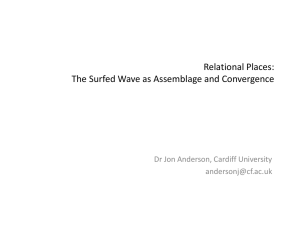
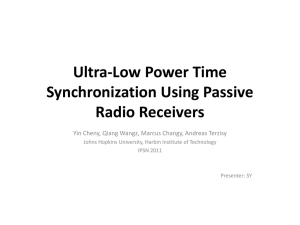

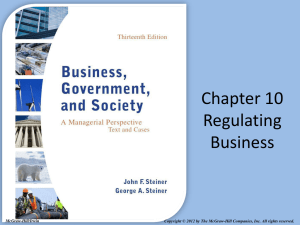

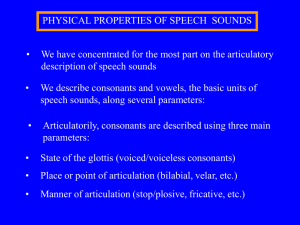
![Kaikoura Human Modification[1]](http://s2.studylib.net/store/data/005232493_1-613091dcc30a5e58ce2aac6bd3fb75dd-300x300.png)